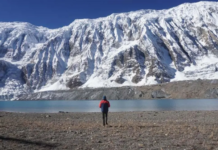Short Everest Base Camp Trek is one of the iconic treks in the world. Located in Nepal, this trek offers an unforgettable experience as it takes trekkers into the heart of the Himalayas, providing jaw-dropping views of Mount Everest, the tallest mountain on Earth. While traditionally, the EBC trek is a 12 to 14-day journey, a shorter 10-day version of this trek can also offer an exciting and manageable way to reach Everest Base Camp without the extended time commitment. Here’s an overview of the Short Everest Base Camp Trek – 10 Days, highlighting key details, the itinerary, and tips to ensure a successful and memorable adventure.
Why Choose the Short Everest Base Camp Trek?
For trekkers with limited time, the 10-days Everest Base Camp Trek offers a condensed yet rewarding. The trek is designed to provide a comprehensive EBC experience in a shorter period, with the same incredible views of Mount Everest and surrounding peaks. The shorter trek also involves a quicker pace but still includes acclimatization stops, ensuring trekkers can safely reach Base Camp while avoiding altitude sickness. With 10 days on the trail, it is an ideal option for travelers who want to witness the grandeur of the Himalayas without committing to a longer expedition.
The EBC Trekking Experience
The trek to Everest Base Camp brings trekkers face-to-face with some of the world’s most stunning mountain landscapes. Aside from the sheer beauty of Mount Everest, trekkers will encounter awe-inspiring glaciers, charming Sherpa villages, Buddhist monasteries, and a diverse array of flora and fauna. Along the way, you’ll meet the friendly Sherpa people, whose hospitality and culture have become intertwined with the legacy of Everest exploration.
This 10-day itinerary is crafted to balance trekking with adequate rest and acclimatization, which is crucial to prevent altitude-related health issues as you gain altitude.
The Itinerary
The 10-day Everest Base Camp Trek follows a well-established path. Here’s an outline of what to expect during your trek:
Day 1: Arrival in Kathmandu
Your journey begins in Kathmandu, the bustling capital of Nepal. You may want to visit some of the famous UNESCO World Heritage Sites, such as the Swayambhunath Stupa (Monkey Temple) or Boudhanath Stupa, before preparing for the trek ahead.
Day 2: Kathmandu to Lukla, and Trek to Phakding
The adventure begins with a scenic flight from Kathmandu to Lukla, the gateway to the Everest region. The flight offers panoramic views of the Himalayas and is often considered one of the most thrilling in the world due to the challenging terrain surrounding Lukla’s airport. The walk is gentle and takes about 3-4 hours, providing you with your first views of the mighty mountains.
Day 3: Phakding to Namche Bazaar
On day three, the trek begins in earnest as you hike toward Namche Bazaar, the largest town in the Everest region and a bustling hub for trekkers.You’ll pass through lush forests of pine and rhododendron, and eventually, the trail begins to climb steeply as you approach Namche. The town is perched in a bowl-shaped valley, and it offers spectacular views of the surrounding peaks, including Everest, Lhotse, and Ama Dablam.
Day 4: Acclimatization Day in Namche Bazaar
To help your body adjust to the increasing altitude, it’s crucial to take an acclimatization day in Namche. Namche Bazaar is also a great place to meet fellow trekkers and experience the local culture.
Day 5: Namche Bazaar to Tengboche
On day five, you’ll continue your trek, heading toward Tengboche. Along the way, you’ll pass through the villages of Kyanjuma and Phunki Tenga before reaching Tengboche, a small village renowned for its Buddhist monastery, Tengboche Monastery. The monastery is an important spiritual site for the Sherpa people and provides a peaceful environment to reflect on your journey.
Day 6: Tengboche to Dingboche
From Tengboche, the trail takes you to Dingboche, a small village in the Imja Khola Valley. The trek is about 5-6 hours long, and the landscape begins to change as you leave the tree line behind and enter more arid terrain. The views of the surrounding peaks, including the impressive Ama Dablam, are breathtaking. Dingboche is another key acclimatization stop, allowing you to adjust to the higher altitude before pushing forward.
Day 7: Dingboche to Lobuche
The trek is challenging, lasting 5-6 hours, and you’ll pass through the Khumbu Glacier, where you can witness the stunning ice formations. As you approach Lobuche, the weather and climate become colder, and the landscape becomes more barren, giving a stark beauty to the surroundings.
Day 8: Lobuche to Everest Base Camp, and Return
On day eight, you’ll finally reach your ultimate destination—Everest Base Camp! The journey to Base Camp is demanding, but the anticipation of standing at the foot of Mount Everest makes it all worthwhile. After soaking in the incredible views of Everest, Lhotse, and Nuptse, you’ll descend to Gorak Shep, the highest point where trekkers stay before reaching Base Camp.
Day 9: Gorak Shep to Kala Patthar and Return to Pheriche
On day nine, you’ll rise early to make the final push to Kala Patthar (5,545 meters), one of the best vantage points for panoramic views of Everest. From Kala Patthar, you’ll witness the sunrise over the Everest massif—an experience that is nothing short of spectacular. After spending some time taking in the views and snapping photos, you’ll trek back to Pheriche for the night.
Day 10: Pheriche to Lukla
On the final day, you’ll trek back to Lukla, retracing the steps you took earlier in the journey. The trek to Lukla takes about 7-8 hours, and while it can be physically demanding, it’s also a time to reflect on the journey you’ve completed. Upon reaching Lukla, you’ll celebrate your achievement and take a flight back to Kathmandu the following day.
Tips for a Successful Short EBC Trek
- Physical Preparation: The trek to Everest Base Camp is physically demanding. While it’s possible to complete it in 10 days, it’s essential to train and prepare your body by hiking on varied terrains before the trek.
- Pack Light but Smart: You’ll need to carry your daypack with essential items like water, snacks, camera, and extra layers. Pack light but be sure to include clothing for cold temperatures, a sleeping bag, and trekking poles for added support.
- Hydration and Nutrition: Drink plenty of water to stay hydrated, especially as altitude increases. Bring high-energy snacks like nuts, energy bars, and chocolate.
- Acclimatization: Don’t rush the trek. Take time to acclimatize, rest, and adjust to the higher elevations. This helps prevent altitude sickness.
Conclusion
The Short Everest Base Camp Trek is a fantastic way to experience the grandeur of the Himalayas in a compact and manageable timeframe. It combines breathtaking scenery, rich cultural experiences, and a sense of achievement that will stay with you forever. Whether you’re an avid trekker or a beginner looking to challenge yourself, this 10-day trek is an unforgettable adventure that brings you closer to the roof of the world.










